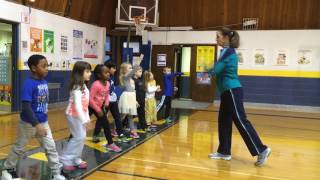
Also, if appropriate, teacher can walk around and check students memory of body parts, e.g. Are students using correct cues for the underhand toss? Have a checklist ready before class begins. Teacher can assess each students ability to underhand toss. In addition to providing a simple thrill, throwing is a necessary skill for children to develop so they can enjoy the many different games and activities. Teacher can call out body parts in anthor language. Students can partner up and one partner calls out a body part and sees if their partner can toss to the correct spot.Ĥ. Students can label tracing with body part names before beginning the tossing-as many as they can remember from previous lessons and some with help from teacher.ģ. Students can switch body tracings with another student.Ģ. Students can continue to toss at the same part until the teacher calls out the next body part.ġ. head, arm, leg, knee, foot, etc.), and students attempt to underhand throw the beanbag onto the body part called out (if they aren't sure of where the body part is, a neighbor can help them). The teacher will call out a body part (e.g. Students place a polyspot away from their body tracing at a distance they are comfortable with (about 8-10 feet or more).

Activities: Individually and with a partner, explore throwing a large ball upward using a two-hand underhand. (If outside, partners use chalk to trace on the blacktop.) When all partners are traced, the class can begin to play "body toss". and appreciate the need for rules in games. Explain the activity as follows, using two students to help demonstrate as needed.Įach set of partners moves to their own space one partner will lie down on a piece of butcher paper and the other partner will trace around his or her body. Tell students they will be using these cues in order to do a special activity called the "Body Toss".

Review the cues previously introduced for the underhand throw.


 0 kommentar(er)
0 kommentar(er)
